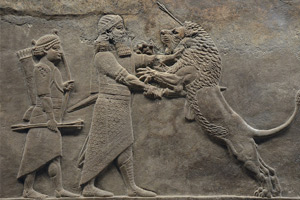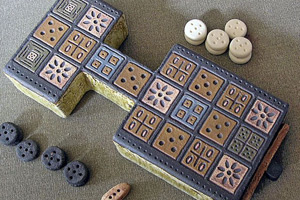
Trees in Sumeria
It is easy to think of Sumeria as a barren land, only kept alive by irrigation canals. In addition to irrigated trees such as date palms, we also find interesting flora such as the tamarisk, juniper and cedar.

Ashurbanipal was the king of the Neo-Assyrian Empire from 668-631 BCE. He was not the eldest son of his father Esarhaddon, so had to share kingship with his brother Shamash-shum-ukin, and ultimately fight him for the throne. Shamash-shum-ukin's rebellion in 652 BCE was crushed, and Ashurbanipal was the sole ruler.
The Neo-Assyrian empire reached its apex in 671 BCE under Ashubanipal's father and was the world's largest empire, stretching over the present-day countries of Iraq, Syria, parts of Turkey, Israel, Lebanon, Jordan and Egypt. The capital Nineveh had maybe 100,000 - 150,000 inhabitants at the time of Ashurbanipal, making it one of the largest cities of the world at the time.
The most famous artwork from Ashurbanipal are the scenes of a lion hunt in the British Museum.
You may also be interested in these articles

It is easy to think of Sumeria as a barren land, only kept alive by irrigation canals. In addition to irrigated trees such as date palms, we also find interesting flora such as the tamarisk, juniper and cedar.

If you have visited the Sumerian section of the British Museum, chances are you have seen the Lion Hunt of Ashurbanipal. It is a series of very impressive wall coverings illustrating the King Ashurbanipal's prowess.

Possibly the oldest board game in existence, and surely the oldest we have rules for, the Game of Ur is a fascinating predecessor to Backgammon. Watch a video on how to play it, and see the original at British Museum.